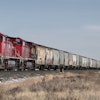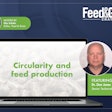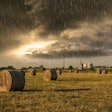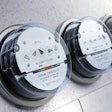Global supply chain issues, increasing sustainability commitments and advancements in equipment maintenance all color the landscape of the U.S. feed industry, as told by Scott Anderson, General Sales Manager,CPM.
ThisFeed & Grain Chatexplores what may be on the horizon for feed equipment end-users.
Transcription of Feed & Grain Chat withScott Anderson, General Sales Manager, CPM
Elise Schafer, editor of Feed & Grain:Hi everyone. Welcome toFeed & Grain Chat.I'm your host Elise Schafer, editor ofFeed & Grainmagazine.
This edition ofFeed & Grain Chatis brought to you by WATT global media and Feedandgrain.com. Feedandgrain.com is your source for the latest news, product and equipment information in the grain handling and feed manufacturing industries.
Today we are joined on Zoom by Scott Anderson, General Sales Manager forCalifornia Pellet Mill (CPM). Scott is here today to discuss innovations in feed manufacturing as it relates to the feed mill of the future.
Hi, Scott. How are you?
Scott Anderson, General Sales Manager for California Pellet Mill (CPM):Hi, Elise. I'm fine. Thanks for having me.
Schafer:Thanks for coming on. Well, let's get right into it.
Scott, the feed industry is just over 200 years old, and its seen several periods of accelerated growth over the years. What do you think is the greatest challenge it's facing today?
Anderson:I think it's safe to say that the biggest challenge that we'll be dealing with for certainly the immediate future will revolve around logistics.
供应链的饲料原料是水珠al, as we all know. And of course there are issues regarding feed delivery. We all know the challenges in hiring and maintaining qualified drivers and even issues such as getting parts to keep equipment up and running will continue to be a challenge and something that we'll need to plan around.
Schafer:Absolutely. When we think of innovation in feed manufacturing equipment over the years, we might think of increasing capacities, increasing speeds and automation. What innovations in pellet milling or conditioning do you expect to see embraced in the next 10 years?
Anderson:So equipment manufacturers have been challenged by our customers to increase automation, and make it easier to maintain equipment and predict maintenance issues on equipment.
So that's where I think most of the equipment manufacturers will be focused — on equipment that is able to control itself, recognize the need to make adjustments and make the adjustments automatically to maintain a consistent product.
And then the ability to let the operators and management know when it will need attention and potentially even notify the home office of certain parts that might be required, maybe even schedule that maintenance. So I think the areas around automation and predictive maintenance will be the areas where we'll see the biggest change in the next 10 years.
Schafer:Now, what about the role of nutritionists and feed formulations? Do you see sensors or analytics such as NIR changing that role?
Anderson:I don't think the role itself changes, but new technologies like NIR will open up some new opportunities — certainly for novel ingredients —like the ability to simply specify the protein content that you want or the fat content that you want and open up a world of ingredients that your batching system might be able to read and automatically adjust for to maintain the precise formulation that the nutritionist is calling for.
And a whole world of novel ingredients is out there. Certainly, you know, we hear a lot about insect protein, for example. So it’ll be interesting to see what happens in that area.
Schafer:What role does sustainability play in the production of feed manufacturing equipment?
Anderson:So besides being a sound business practice, we're being challenged by both the supply chain as well as our own employees to define and quantify our sustainability efforts. Consumers are increasingly making buying decisions based on the perceived corporate citizenship of the companies that they're purchasing from and that's being driven all the way up through the supply chain.
So, you know, we might think that we're remote as an equipment manufacturer from the consumer, you know, in the grocery store, or, you know, at the fast-food restaurant, but those companies are qualifying their vendors more and more based on sustainability scorecards, so it's something that we have to keep in mind.
We also recognize that our current and prospective employees care about sustainability and want to know that they're going to work for a responsible company. So I think that sustainability will become front of mind more and more for all companies.
Schafer:Absolutely. Finally, are you optimistic or pessimistic about the future of the feed industry, Scott?
Anderson:I'll always be optimistic about the prospects for the feed industry, animal protein will continue to be a critical part of our diets. I believe that population growth and increasing standard of living will continue to drive demand for animal protein for the foreseeable future.
Schafer:Thank you so much for sharing your time today and your insights into the feed mill of the future. Now, if you'll be in Atlanta next week for IPPE and are free on January 25, consider joining us at Feed Strategy Conference. Here. Scott will be joining me and other experts from around the feed industry for our closing Panel Discussion: Imagining the Feed Mill of the Future.
你可以找到更多的信息关于这个半天conference atfeedstrategy.com/feed-strategy-events. Thank you so much, Scott, and thanks to all of you for tuning in!


















